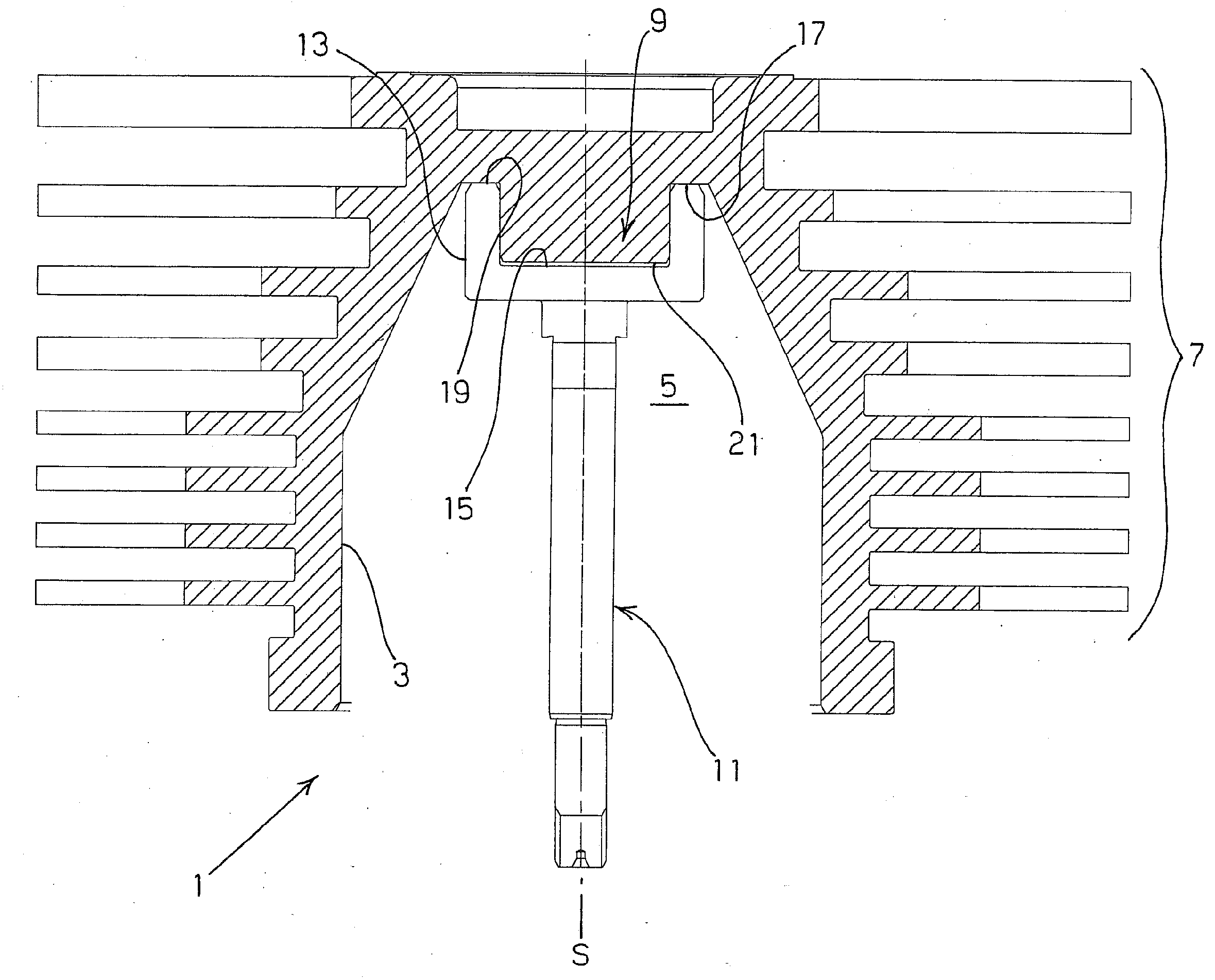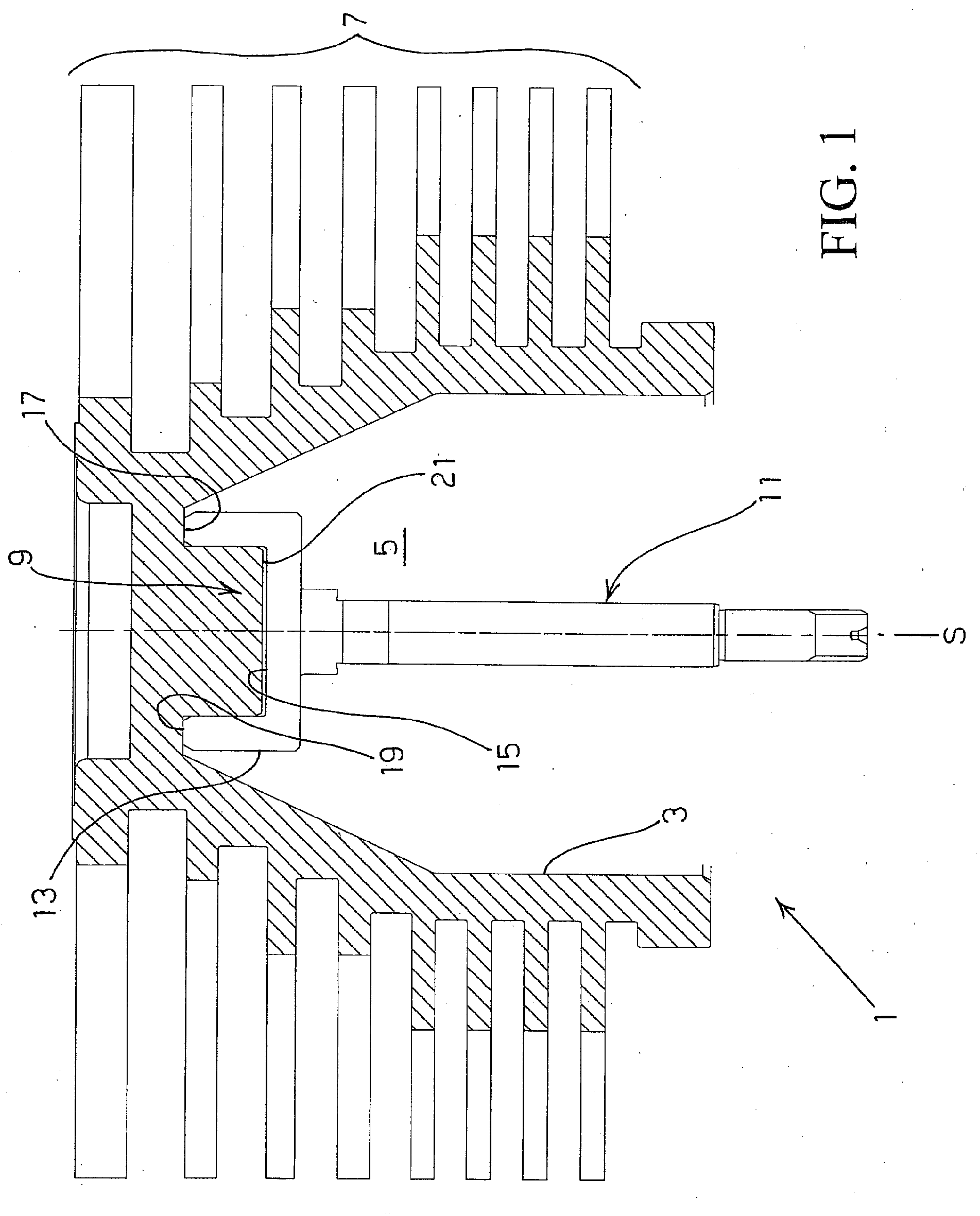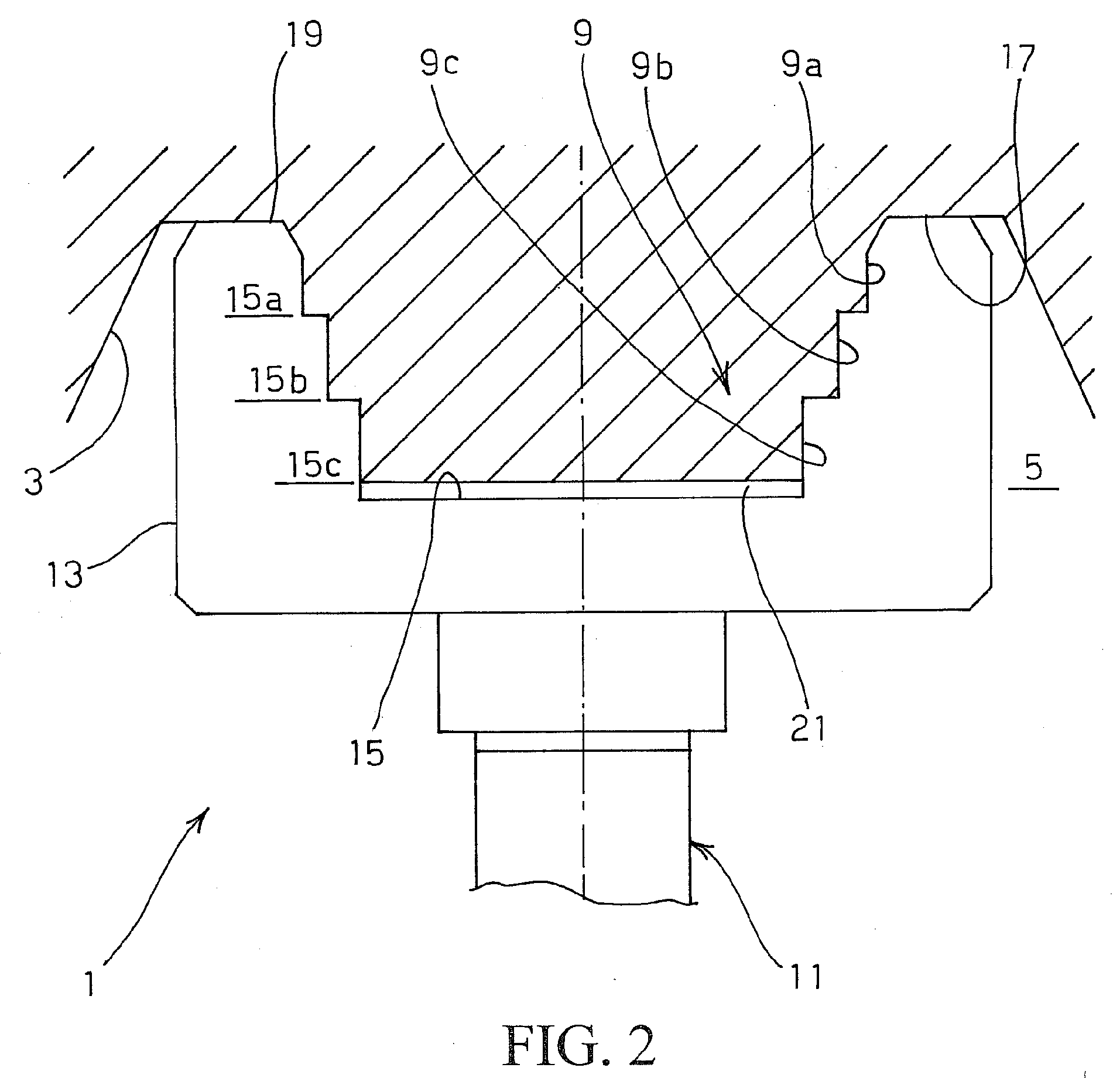Method for manufacturing the rotor assembly of a rotating vacuum pump
a technology of rotary vacuum pump and rotor assembly, which is applied in the direction of manufacturing stator/rotor bodies, machines/engines, liquid fuel engines, etc., can solve the problems of reducing the tensile yield point, reducing the number of rejected pieces, and reducing the overall manufacturing cost. , the effect of easy reversibility
- Summary
- Abstract
- Description
- Claims
- Application Information
AI Technical Summary
Benefits of technology
Problems solved by technology
Method used
Image
Examples
Embodiment Construction
[0032]Referring to FIG. 1, there is shown a rotor assembly 1 comprising a rotor 3 and a supporting shaft 11. In the illustrated example, which relates to a turbomolecular pump, rotor 3 includes a central bell-shaped cavity 5, intended to house the electric motor of the pump, and a plurality of parallel rotor discs 7, intended to cooperate with corresponding stator discs formed on the stationary part of the pump in order to form pumping stages.
[0033]According to the invention, rotor 3 further includes a male projection 9 centrally and axially extending towards the interior of bell-shaped cavity 5. In the illustrated example, projection 9 is cylindrical, but it could even have a different shape, for instance a frusto-conical shape. However, it is evident that, since the rotor assembly is to rotate about axis S of supporting shaft 11 at very high speed while keeping a perfect alignment, it is preferable that the projection has the shape of a solid of revolution, so as to perturb as lit...
PUM
| Property | Measurement | Unit |
|---|---|---|
| temperature | aaaaa | aaaaa |
| temperature | aaaaa | aaaaa |
| temperature | aaaaa | aaaaa |
Abstract
Description
Claims
Application Information
 Login to View More
Login to View More - R&D
- Intellectual Property
- Life Sciences
- Materials
- Tech Scout
- Unparalleled Data Quality
- Higher Quality Content
- 60% Fewer Hallucinations
Browse by: Latest US Patents, China's latest patents, Technical Efficacy Thesaurus, Application Domain, Technology Topic, Popular Technical Reports.
© 2025 PatSnap. All rights reserved.Legal|Privacy policy|Modern Slavery Act Transparency Statement|Sitemap|About US| Contact US: help@patsnap.com



